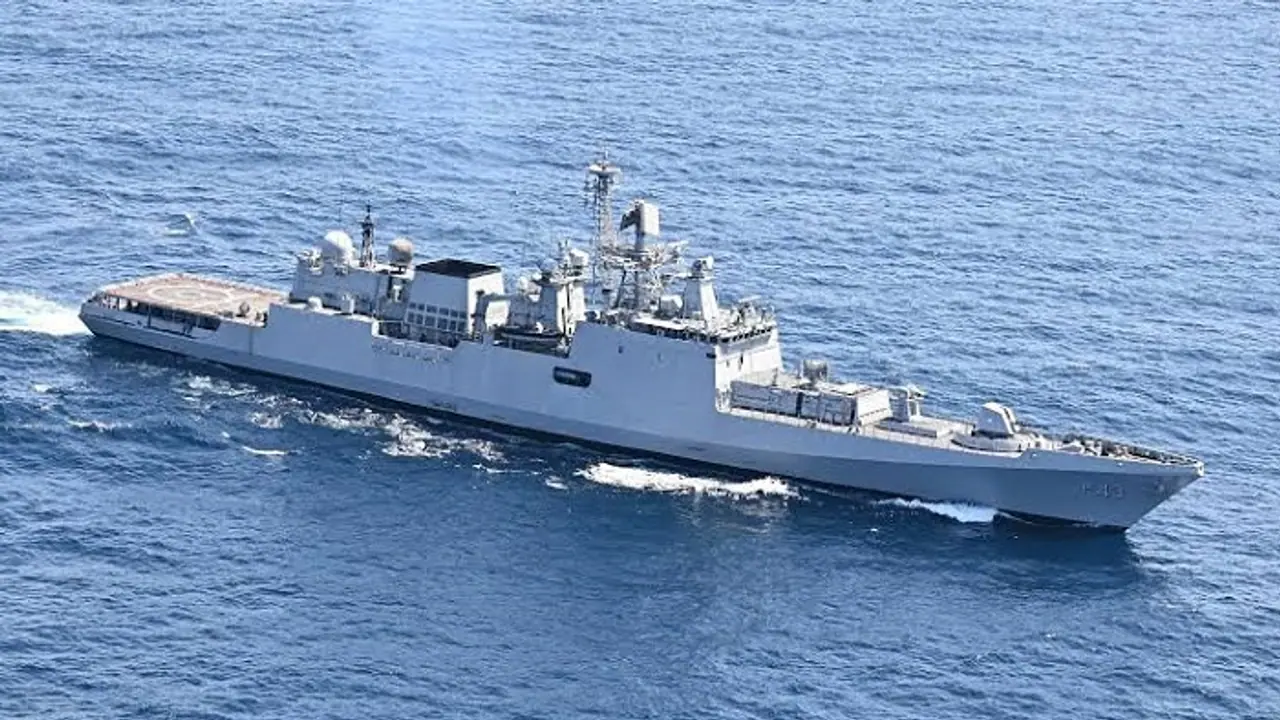Defence Minister Rajnath Singh, who attended the event, called the ship a symbol of India’s growing maritime power and an important step in the strong partnership between India and Russia.
On December 9, India's naval strength got a boost with the addition of INS Tushil (F 70), a new stealth missile frigate from the Talwar-class. The warship was officially commissioned at the Yantar Shipyard in Kaliningrad, Russia.

Defence Minister Rajnath Singh, who attended the event, called the ship a symbol of India’s growing maritime power and an important step in the strong partnership between India and Russia.
Mr. Singh highlighted Russia's support for India's goal of becoming self-reliant under the 'Aatmanirbhar Bharat' initiative as a strong example of the close friendship between the two nations. He mentioned that the use of 'Made in India' components is steadily growing in many ships, including the INS Tushil.
Frigate is a medium-sized warship used by the Navy, typically around 125-150 meters long. It is smaller than a destroyer but powerful and versatile. Equipped with advanced weapons and technology, frigates can protect larger ships, attack enemy targets, and ensure coastal security. They are designed for speed, stealth, and multi-role capabilities.
India's light tank Zorawar successfully test fires at 13,000-feet high-altitude in Ladakh
INS Tushil is a modernized warship belonging to the Krivak III class under Project 1135.6. This class of ships already has six similar vessels in service with the Indian Navy. Three of these ships, known as the Talwar class, were built at the Baltiysky Shipyard in St. Petersburg, Russia. The other three, called the Teg class, were constructed at the Yantar Shipyard in Kaliningrad, Russia. These frigates are designed for advanced combat and play a key role in strengthening India’s naval capabilities.
All Krivak-class frigates are powered by engines manufactured by Zorya Nashproekt, a Ukrainian company. What makes INS Tushil particularly notable is that its engine was produced in Ukraine, even amidst the ongoing conflict between Russia and Ukraine, highlighting the complexities of global defense collaborations.
According to Firstpost, about 30 ships in the Indian Navy rely on gas turbines made by a Ukrainian company as their main source of power. These include a variety of ships, such as the Veer-class missile boats, the older Rajput-class destroyers, and the newly built Visakhapatnam-class destroyers. These gas turbines play a key role in powering and propelling these warships.
INS Tushil is the seventh ship in its class and the first of two new frigates currently being built in Russia. Back in October 2016, India and Russia signed an agreement to build four stealth warships. As part of the deal, two are being constructed in Russia, while the other two are being built in India at Goa Shipyard Limited with the help of Russian technology. The second frigate, named Tamal, is expected to be handed over to the Indian Navy in Russia by the first quarter of next year.
Designed for operations in open oceans (known as blue water), INS Tushil is equipped to handle all aspects of naval warfare. It is capable of operating across four key areas: air, surface (on water), underwater, and the electromagnetic spectrum (which includes radar and communication systems). With these advanced features, INS Tushil strengthens India’s ability to conduct complex missions in diverse environments.
INS Tushil is a 125-meter-long warship weighing 3,900 tonnes. It combines advanced Russian and Indian technology, making it a powerful and modern vessel in naval warfare.
Indian Navy commissions stealth guided missile frigate INS Tushil in Russia
The ship is armed with a range of advanced weapons, including eight BrahMos anti-ship cruise missiles launched vertically, 24 medium-range and eight short-range surface-to-air missiles for air defense, and a 100 mm main gun. For close-range protection against incoming missiles, it has two rapid-fire weapon systems. To tackle underwater threats, it is equipped with two double torpedo tubes and a rocket launcher.
Additionally, INS Tushil features advanced radars, navigation systems, sonar, electronic warfare equipment, fire control systems, and decoys, ensuring it is well-prepared for a variety of combat situations.
INS Tushil can also carry advanced helicopters like the Kamov 28, designed for anti-submarine missions, and the Kamov 31, used for airborne early warning. The ship is powered by a modern gas turbine engine with advanced control systems, allowing it to reach speeds of over 30 knots (around 55 km/h).
(The author of this article is a Defence, Aerospace & Political Analyst based in Bengaluru. He is also Director of ADD Engineering Components, India, Pvt. Ltd, a subsidiary of ADD Engineering GmbH, Germany. You can reach him at: girishlinganna@gmail.com)
